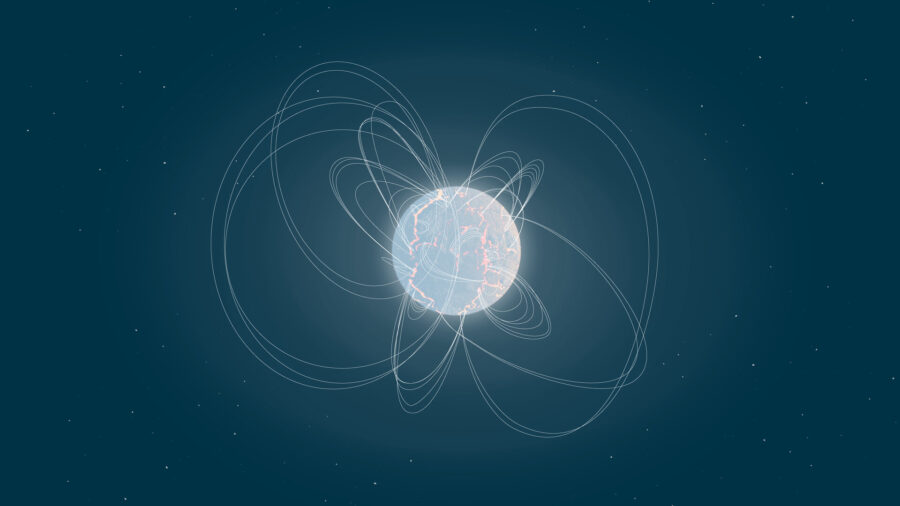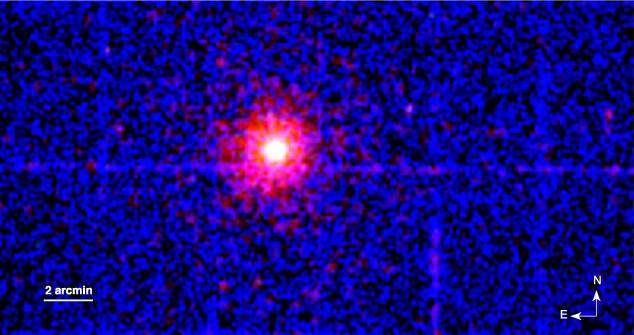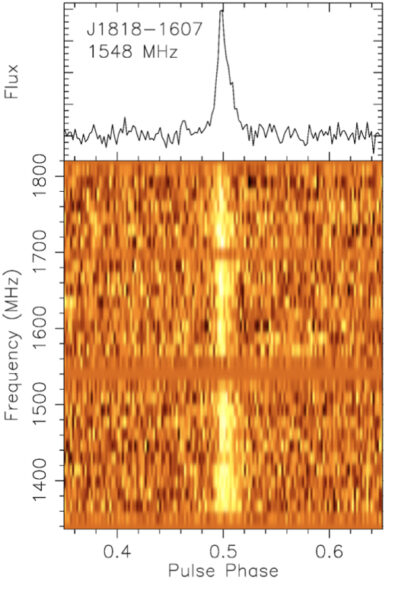
ESA
Pulsars have historically been classified into different categories — but the distinction between them may be blurrier than we thought. The discovery of the youngest pulsar yet observed is now raising questions about how we classify these extreme objects.
Read more about the pulsar's discovery here.
The Source of a Pulsar’s Power
When a massive star explodes as a supernova at the end of its lifetime, an incredibly dense remnant with the mass of one or two Suns — but spanning only 20 km or so in diameter — is left behind. If this resulting neutron star is powerfully magnetized, it can emit a beam of radiation that sweeps across the Earth as the star spins, appearing to us as a pulsar.

CNASA Goddard SFC / Cruz deWilde
The pulsars that we’ve observed are classified into three categories based on what we think powers their emission:
- Rotation-powered pulsars
Usually detected from their pulsed radio emission, this is the most commonly observed type of pulsar. These rapidly rotating stars gradually spin down over time. Their lost rotational energy powers the particle acceleration that produces the emission we observe. - Accretion-powered pulsars
These pulsars occur in binaries and accrete matter from their companion stars. Pulsed X-ray radiation is produced by rotating hot spots caused when the accretion flow strikes the surface of the pulsar. - Magnetically-powered pulsars
These bodies, known as magnetars, are the most magnetized objects in the universe, sporting magnetic fields of around 1014–1015 Gauss (compare this to Earth’s magnetic field, which is less than one Gauss!). The decay of their unstable magnetic field powers the emission of high-energy radiation, particularly at X-ray and gamma-ray wavelengths.
But what if these pulsar categories aren’t as distinct as we think they are? Observations of a very recently born pulsar, described in a publication led by Paolo Esposito (Scuola Superiore IUSS and INAF, Italy), are now challenging our classifications.
Neither Here Nor There

Adapted from Esposito et al. 2020
The source Swift J1818.0–1607 was first discovered in March 2020 as a flaring outburst of X-ray radiation. Esposito and collaborators present X-ray observations of the source using the Swift Observatory, XMM-Newton, and NuSTAR, all of which paint the picture of an incredibly young — just 240 years, a relative baby on cosmic scales! — magnetar undergoing an outburst.
But Swift J1818 has its quirks. Of the roughly 30 magnetars we’ve discovered, Swift J1818 spins faster than any of them, with a period of just 1.36 seconds. Its quiescent luminosity is lower than we’d expect given its young age. And follow-up radio observations with the Sardinia Radio Telescope in Italy reveal that Swift J1818 also exhibits the strong and short radio pulses expected for a rotation-powered pulsar.

Adapted from Esposito et al. 2020
Esposito and collaborators’ observations lead them to conclude that Swift J1818 is a peculiar magnetar with properties that straddle those of rotationally and magnetically powered pulsars. This makes this newborn the latest in a small collection of oddball young neutron stars with diverse properties, suggesting that there may still be much we don’t know about the driving forces behind pulsar emission, and how this changes over a pulsar’s lifetime.
Citation
“A Very Young Radio-loud Magnetar,” P. Esposito et al 2020 ApJL 896 L30. doi:10.3847/2041-8213/ab9742
This post originally appeared on AAS Nova, which features research highlights from the journals of the American Astronomical Society.
 1
1
Comments
Anthony Barreiro
July 29, 2020 at 11:39 pm
If I'm reading the ApJL article correctly, this neutron star is between 15,600 and 26,400 light years distant, depending on which model is used to estimate its distance. The coordinates put it in northern Sagittarius near the border of Serpens Cauda. What would the supernova have looked like in 1780 CE? Are there any records of the supernova being observed? Or would it have been hidden by all the dust between us and the inner part of the galaxy? It's strange to think that we can see supernovas in galaxies tens of millions of light years distant, but not in our own galaxy.
You must be logged in to post a comment.
You must be logged in to post a comment.